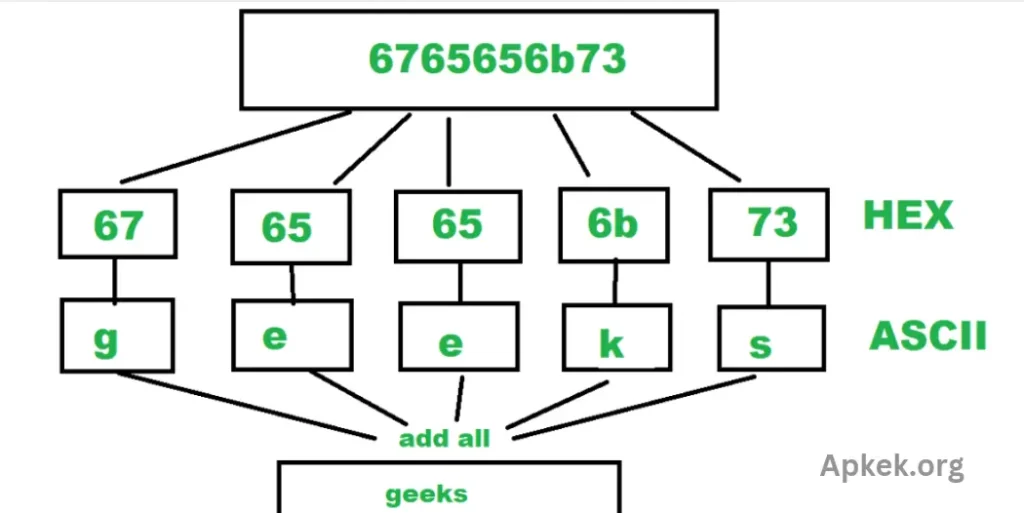Information shared via SMS must be kept extremely secure. It’s essential that only trusted individuals handle our messages, regardless of personal opinions. For instance, a particular website article may contain sensitive insights—details that are meant to be read carefully and protected. When we receive a message like this, it’s not just about reading it; it’s about understanding that the information holds value and should be treated with discretion.
Do we need a Text Encoder App?
SMS has evolved beyond just a mobile phone feature and is now commonly used in public spaces. It allows individuals to communicate discreetly, without disturbing others. In addition to SMS, various social media apps like WhatsApp and Messenger facilitate private conversations.
However, if others gain access to our messages on these platforms, they can easily decipher what’s being discussed. This is where text encoding comes into play, offering a way to communicate securely by using coded language to protect sensitive information.
1. ASCII (American Standard Code for Information Interchange)
What is ASCII?
ASCII is one of the oldest and most basic encoding standards used to represent text in computers. Each character in the ASCII system is mapped to a specific numeric value. It supports 128 characters, including control characters (like the newline character) and printable characters (such as letters, digits, punctuation, and symbols).
How it Works
Each letter, number, or symbol in ASCII is assigned a unique number between 0 and 127. For example, the letter “A” corresponds to 65, and the digit “1” corresponds to 49. When text is encoded in ASCII, these numbers are transmitted or stored as binary values.
Use Cases
ASCII is mainly used in legacy systems and simple text files, and it’s crucial for understanding how computers interpret basic text data. While it’s been largely replaced by more sophisticated encoding systems, its simplicity ensures widespread compatibility and ease of use.
2. Binary (BIN)
What is Binary Encoding?
Binary encoding represents text or data using the binary number system, which consists of only two digits: 0 and 1. In computing, binary is the fundamental language of machines, as all operations in a computer are ultimately reduced to binary code.
How it Works
Each character or symbol is converted into its binary equivalent using an encoding standard like ASCII. For instance, the letter “A” (ASCII 65) would be represented in binary as “01000001”.
Use Cases
Binary encoding is essential in low-level programming, file storage, and data transmission. It ensures that data is efficiently transmitted across networks and can be easily processed by machine-level operations. It is also used in protocols for data encoding and decoding, where simplicity and speed are key.
3. Octal (OCT)
What is Octal Encoding?
Octal encoding uses base-8, a system where each digit represents values from 0 to 7. It is a more compact way to represent binary data and is often used in computing systems that need to handle data efficiently.
How it Works
Each set of three binary digits (bits) is grouped together and represented by an octal digit. For example, the binary sequence “110” corresponds to the octal digit “6”. In this way, octal is a shorthand for binary data.
Use Cases
Octal encoding is commonly used in UNIX file permissions, where file access rights are represented as octal numbers (e.g., 755). It is also used in legacy systems where space constraints required a more compact representation than binary.
4. Hexadecimal (HEX)
What is Hexadecimal Encoding?
Hexadecimal is a base-16 encoding system, using sixteen symbols: 0-9 and A-F. It is frequently used in computing as a more human-readable way to represent binary data.
How it Works
Each group of four binary digits (bits) is represented by a single hexadecimal digit. For instance, the binary value “1111” is represented as “F” in hexadecimal, and the binary value “1010” is represented as “A”. This compression makes hexadecimal ideal for representing long binary sequences.
Use Cases
Hexadecimal is widely used in programming, particularly in memory addressing, color coding in web design (e.g., #FF5733 for colors), and debugging tools, as it offers a compact and readable format for binary data. It’s also used in cryptographic systems and various encryption algorithms.
5. Base64
What is Base64 Encoding?
Base64 encoding is a method used to convert binary data into text, which is particularly useful for encoding binary files like images, videos, or documents into a format that can be transmitted over text-based protocols like email or HTTP.
How it Works
Base64 encoding breaks the input binary data into chunks of 6 bits and then represents each chunk as one of 64 characters from the Base64 alphabet. This creates a string of text that can be safely transmitted as text, even through systems that might not support binary data.
Use Cases
Base64 is most commonly used in email transmission (such as attachments), embedding images directly into web pages (via data URIs), and in situations where binary data must be encoded into a printable form. It’s particularly useful in web applications and APIs that need to handle media files or cryptographic information.
Benefits of Text Encoders in Chat Systems
Text encoders are essential tools for maintaining privacy, security, and data integrity in communication systems. In chat applications, these encoding systems provide the following benefits:
- Security: Encoding messages into formats like Base64 or HEX can prevent unauthorized users from easily reading sensitive content, ensuring that only intended recipients can decode and understand the message.
- Data Integrity: Encoders like Base64 and HEX help ensure that data isn’t corrupted when transmitted across different systems, particularly in environments with restrictions on character encoding or binary data.
- Compatibility: Encodings like ASCII, BIN, and HEX ensure that messages are compatible across different platforms and systems. For example, HEX and Base64 encoded messages are safe to transmit through systems that don’t support binary data.
- Efficiency: Using encoding schemes helps compress data, making it easier to transmit, especially when dealing with complex data types like images or files within text-based platforms like email and SMS.
Frequently Asked Questions
What is the purpose of using text encoding in chat systems?
Text encoding ensures that messages are transmitted securely and efficiently across different platforms. It helps to protect sensitive information by encoding it in a format that is not easily readable by unauthorized users. Additionally, encoding helps to ensure data integrity and compatibility across various systems, especially in applications that handle text-based communication.
What is ASCII encoding and where is it used?
ASCII (American Standard Code for Information Interchange) is a character encoding standard that assigns unique numeric values to letters, digits, and symbols. It is commonly used in legacy systems, simple text files, and basic data transfer. Despite being a basic encoding system, it remains useful for understanding how computers process text data.
How is Binary (BIN) encoding different from ASCII?
While both ASCII and Binary encoding represent text, Binary (BIN) encoding uses only two symbols, 0 and 1, to represent data in the binary numeral system. In contrast, ASCII maps characters to numeric values ranging from 0 to 127. Binary encoding is more fundamental to how computers operate, as all data within computers is ultimately represented as binary.
What is Hexadecimal (HEX) encoding and how is it useful?
Hexadecimal encoding is a base-16 system that represents data using sixteen symbols: 0-9 and A-F. It’s a more compact and readable format for binary data, where each group of four binary digits is represented by a single hexadecimal digit. HEX encoding is often used because it simplifies the process of viewing and debugging binary data.
What is Base64 encoding and why is it important?
Base64 encoding is a method of encoding binary data into ASCII text, which makes it suitable for text-based transmission protocols like email and HTTP. It’s especially important when dealing with binary files (e.g., images or documents) that need to be embedded or transmitted over systems that only support text data.
What is the difference between encoding and encryption?
Encoding is the process of converting data into a specific format to ensure proper transmission or storage, while encryption is the process of transforming data into a scrambled format that can only be read by authorized parties. Encoding does not provide security, whereas encryption is specifically designed to protect data.
Conclusion
Text encoding methods such as ASCII, Binary (BIN), Octal (OCT), Hexadecimal (HEX), and Base64 are integral to modern digital communication. Each encoding method serves a unique purpose, enabling secure, efficient, and compatible data transmission. ASCII remains one of the most widely recognized encoding standards, offering a simple yet effective approach for representing text that works across various systems. It plays an essential role in legacy systems and basic file formats, maintaining broad compatibility.

